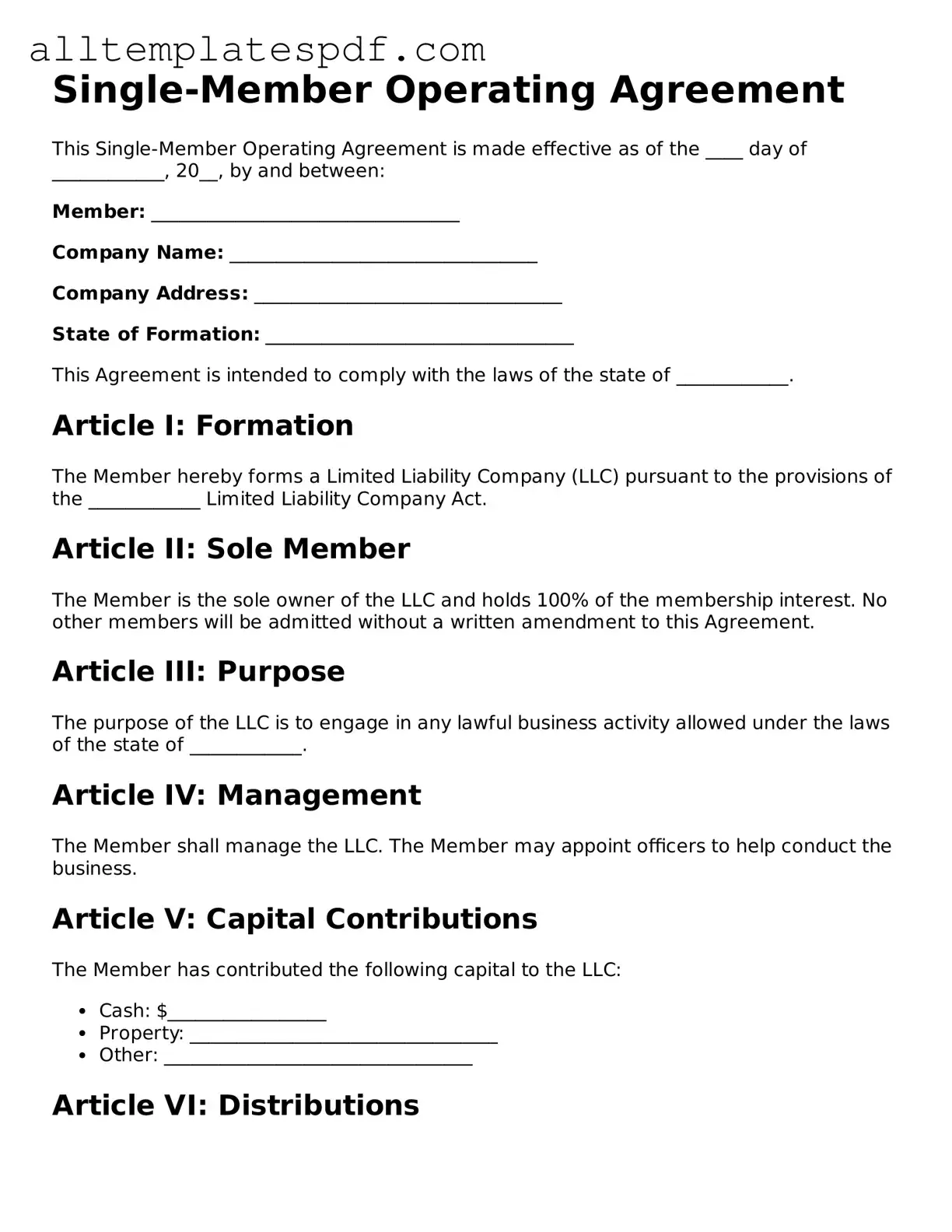Attorney-Approved Single-Member Operating Agreement Template
A Single-Member Operating Agreement is a legal document that outlines the management structure and operational guidelines for a single-member limited liability company (LLC). This agreement serves as an essential tool for clarifying the owner's rights and responsibilities, ensuring that the business operates smoothly and in compliance with state regulations. To get started on establishing your business framework, fill out the form by clicking the button below.
Open Editor
